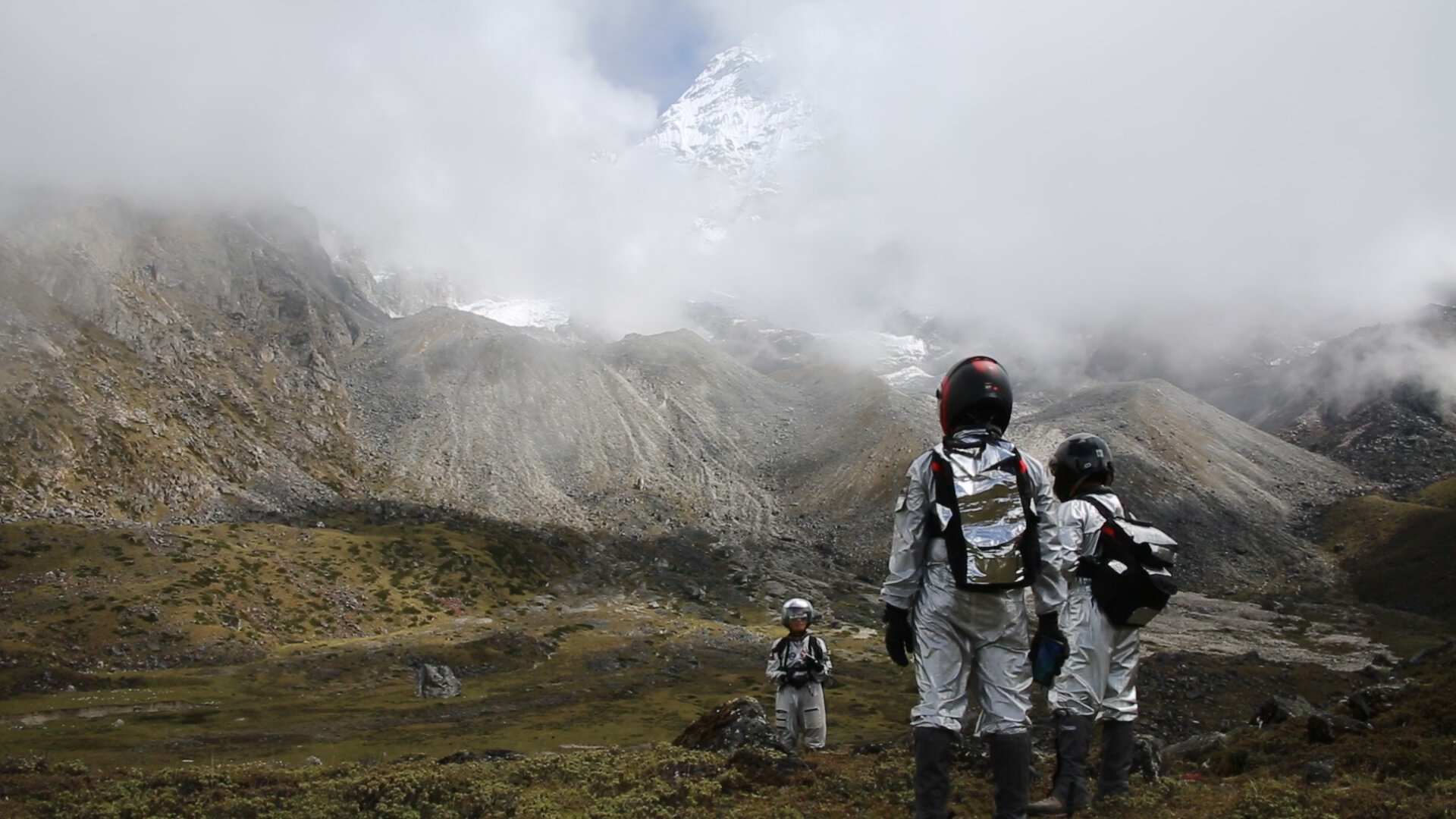
"I am so tired of trying to figure out if I'm still alive. I don't have the data."
My mother spoke these words to me shortly before her death from Alzheimer's disease. Her words became the inspiration for this film that investigates themes including who we are, how we live, what we remember and what we strive to accomplish or survive. Proof of life.
This film is not only the story of the acquisition of three very special rocks and their journey into Earth's orbit and back, but also the story of searching for evidence of existence, of shared humanity and planetary futures.
A meteorite from the moon returns to Lunar gravity.
The Western Sahara is a primary source for finding meteorites. The clear night skies and lack of noise make it easy to spot a fireball hurtling to the ground. In addition, meteorites are easier to see in the desert due to their color contrast with the sand.
On the desert’s edge, outside of Tindouf, Algeria, are a collection of refugee camps set up in 1975–76 for Sahrawi refugees who fled from Moroccan forces during the Western Sahara War. Most of the original refugees are still living in these camps. As a potential source of income some refugees search for meteorites among landmines sown during the war. In my film, one of these lunar meteorites, found outside of a Sahrawi camp, is returned to space and its original gravitational state, while for the Sahrawi living in the refugee camps, a return to their homes in Western Sahara is still not possible.
A rock from earth hopes to become a rock from Mars
Mars simulation missions are being held around the globe in Mars-like environments such as the desert of Utah, the Gobi Desert, or in the Himalayas. International groups of scientists are selected to conduct research in these isolated and confined environments in the hope of one day doing the same on Mars.
Simulation astronauts don spacesuits, run a decompression sequence and head out on EVAs, searching for specific minerals or any evidence of life, both past and future. This section follows the story of a mineral, collected during a Mars sim-EVA that journeys from a simulation site to Mars’ gravitational field in space.
A crystal becomes a weightless memory
My grandfather, an amateur mineral collector, struggled with Alzheimer’s disease through his eighties. He was able to recall specific details about the samples in his collection long after he was able to remember or identify family members.
One of the samples in his collection came from an extraordinary geological anomaly 800 meters below the Earth’s surface. Deep inside the Merkers Mine there is a cavern filled with giant, glistening, geometric Halite crystals. Entering this natural wonder is like walking into a mammoth geode, an experience that is immersive, otherworldly and extremely disorienting.
The halite crystal in my Grandfather’s collection, that held some of his last memories, was sent into space and became weightless.
Sojourner 2020 launches to the ISS
On March 6, 2020, MIT Media Lab’s Space Exploration Initiative launched a payload to the International Space Station with my three minerals aboard. The payload, “Sojourner 2020,” featured a three-layer structure which created three different “gravities.” Each layer of the structure rotated independently. The top layer remained still in weightlessness, while the middle and bottom layers spun at different speeds to produce centripetal accelerations that mimic lunar gravity and Martian gravity, respectively.
(This photo courtesy NASA)



